Research reveals COVID-19 likely had ‘unnatural’ origin
Scientists say COVID-19 is more likely to have had an "unnatural" origin than a "natural" one.
Published
1 month ago onBy
Talker News
By Imogen Howse via SWNS
COVID-19 most likely originated in a lab, a new study has concluded.
The origin of the pandemic has long been contentious. Some believe the virus was zoonotic and spread from animals to humans, such as via the wet market in Wuhan, China.
Others believe it leaked, accidentally or otherwise, from a laboratory – namely the Wuhan Institute of Virology, also in China.
Now, scientists have discovered that COVID-19 is more likely to have had an "unnatural" origin than a "natural" one.
A research team used an established risk analysis tool called the Grunow-Finke assessment to create a likelihood scale for possible pandemic causes.
Results from the assessment pointed to the virus having an ‘unnatural’ origin – with the fact that the first infections were in the vicinity of laboratories studying coronaviruses noted as one of the strongest indications.
The study highlights that the first cases of COVID-19 were reported in Wuhan, China, on 30 December 2019 – all within close proximity of both the Wuhan Institute of Virology (WIV) and the Wuhan Center for Disease Control and Prevention (WHCDC).
Dr Xin Chen, a researcher at the University of New South Wales (UNSW) in Australia, said: “The WIV had been conducting experiments involving SARS-like coronavirus in bats since 2010.
“One of the bat viruses being studied at the WIV shares a 96.1 percent homology with SARS-CoV-2, something which was only revealed after the pandemic began.
“The WIV was only eight miles away from the Huanan Seafood Wholesale Market, where some of the initial cases were linked to.
“The WHCDC was also studying coronaviruses, and on 2 December 2019, less than a month before the first infections, it moved to a location 280m from the Huanan Seafood Wholesale Market.

“A move may have increased the chance of a laboratory accident.”
Dr. Chen added that although some scientists use the outbreak at the wet market as an indication of a ‘natural’ or zoonotic origin, several of the first infected people had not visited Huanan.
“This points to the possibility that Huanan was a source of an amplification event, rather than 105 the origin of SARS-CoV-2,” he said.
“It is also worth noting that evidence of an intermediary animal host – necessary for this theory – is lacking.”
The team also highlighted ‘unusual’ actions by scientists working at the WIV as a factor pointing to a lab leak origin of COVID-19.
Dr. Abrar Chughtai, an epidemiologist at the University of New South Wales, explained: “In September 2019, control of the WIV lab was handed over from civilian to military command and control, and a contractor was hired to renovate the ventilation system within the facility.
“Simultaneously, for reasons unknown, the WIV removed a large virus database containing approximately 20,000 specimens from bats and mice that had previously been accessible to the public.
“It is unclear whether the database included sequences that could be relevant to the origin of SARS-CoV-2 and whether any attempt was made to cover it up.”
He added that 'not all requested information', such as laboratory records, was made available to the team from the World Health Organisation tasked with investigating the origins of COVID-19 in 2021.

Dr. Chughtai also pointed to instances of ‘poor’ biosecurity procedures at the WIV.
“Some scientists did not follow proper protective equipment protocols while handling bats and were bitten by them,” he said.
“And, in early November 2019, some staff members from the institute were hospitalized with Covid-19-like symptoms.”
Dr. Chandini Raina Macintyre, another epidemiologist at UNSW, also highlighted inconsistencies in remarks from scientists who initially advocated for the likelihood of a ‘natural’ COVID-19 origin.
“Freedom of Information requests in the US revealed that virologists who publicly stated that SARS-COV-2 had a natural origin simultaneously privately communicated doubts about this to each other, discussing the fact that research at WIV could have led to the creation of SARS-COV-2," she said.
“It is possible that US funding of some of the research at WIV was a motivation for the public messaging about natural origins to be promoted and discussion of a lab accident to be suppressed.”
The study, published today in the journal Risk Analysis, admits that its Grunow-Finke assessment cannot prove that COVID-19 leaked from one of the two labs in Wuhan.
However, it also argues that the risk factors outlined throughout the assessment cannot be dismissed.
Dr. Chen said: “Laboratory accidents are common, and, if the pathogen in question is highly contagious, it is possible that an accidentally infected worker can set off an epidemic in the community.
“The fact that the first cluster of cases were in the vicinity of a world-leading coronavirus laboratory, known to be experimenting on SARS-like viruses, as well as a second lab which was also working on coronaviruses, points to an unnatural origin.”
Stories and infographics by ‘Talker Research’ are available to download & ready to use. Stories and videos by ‘Talker News’ are managed by SWNS. To license content for editorial or commercial use and to see the full scope of SWNS content, please email [email protected] or submit an inquiry via our contact form.
You may like


Rare antique clock stolen from museum returned after more than 20 years
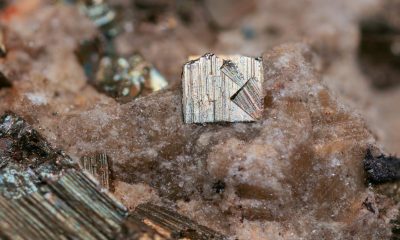

Fool’s gold could be valuable source of lithium: study
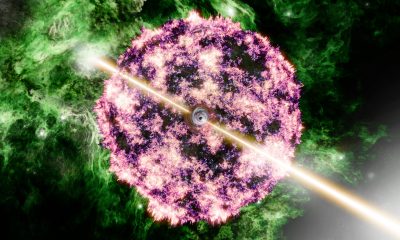

Massive star collapse causes brightest gamma-ray burst ever
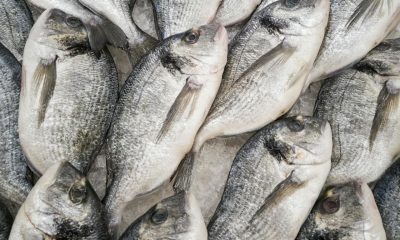

Eating too much seafood may increase exposure to ‘forever’ chemicals
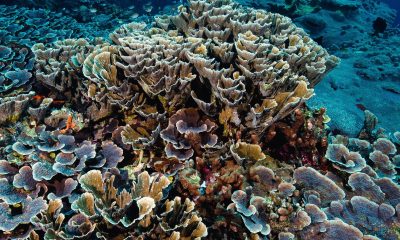

Global warming threatens deep parts of Great Barrier Reef
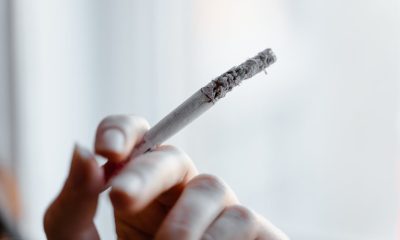

Secondhand smoke linked to dangerous heart disorder
Other Stories


Blood test can detect signs of knee condition 8 years before X-rays
Early detection could lead to treatments that slow the progression of the most common form of arthritis.


Man captures ultra rare albino squirrel on camera
The white squirrel has red eyes so is thought to be an albino squirrel.


Adorable dog kicks his leg while he walks
A video captured the pup bouncing along the street of his native China.


Woman with rare ‘Sleeping Beauty’ condition sleeps every four hours
She was diagnosed at age 18 after years of struggling to stay awake in school and nodding off during class.


97-year-old veteran receives WWII service medal 80 years later
"We’re all so proud of Eve."
Top Talkers

 Parenting1 week ago
Parenting1 week agoSingle mom details struggles of feeding her 12 kids

 Lifestyle1 week ago
Lifestyle1 week agoWoman regrets her tattoo nightmare: ‘It’s horrendous’

 Wildlife4 days ago
Wildlife4 days agoClever elephant returns visitor’s shoe that fell into enclosure

 Health5 days ago
Health5 days agoNew study reveals ‘old age’ begins later than it used to

 Good News5 days ago
Good News5 days agoDisabled student takes first steps in 10 years on graduation stage

 Animals18 hours ago
Animals18 hours agoAdorable dog kicks his leg while he walks

 Entertainment2 days ago
Entertainment2 days agoWhat is the perfect movie length?

 Broadcast23 hours ago
Broadcast23 hours agoAre allergies interfering with your social life?
